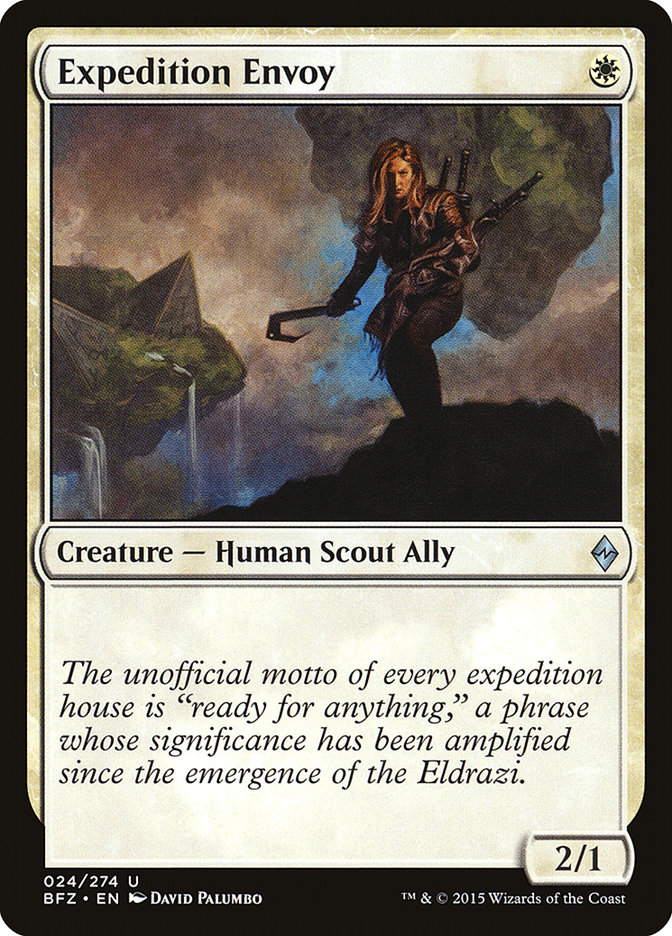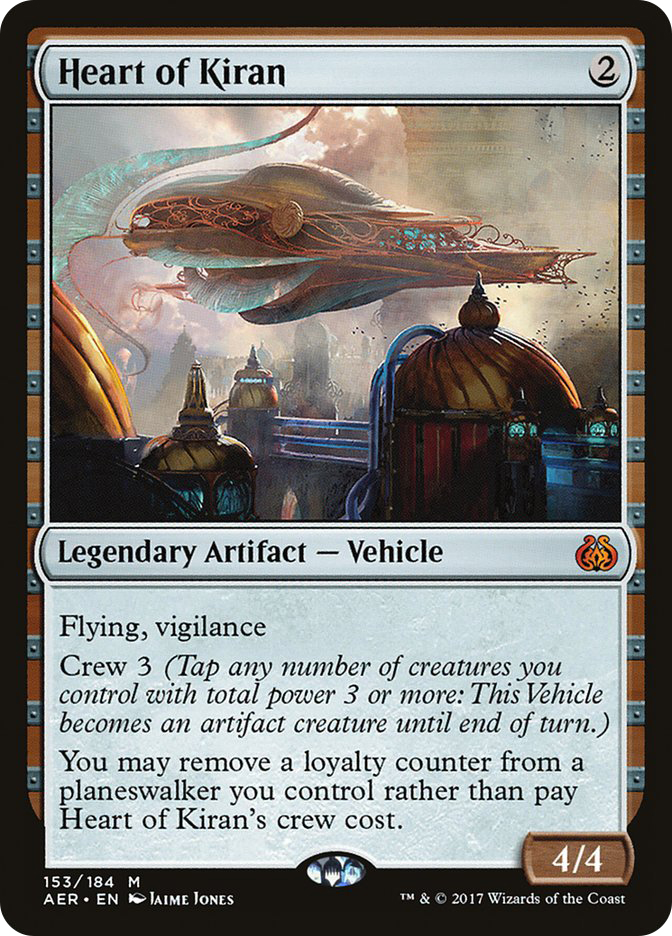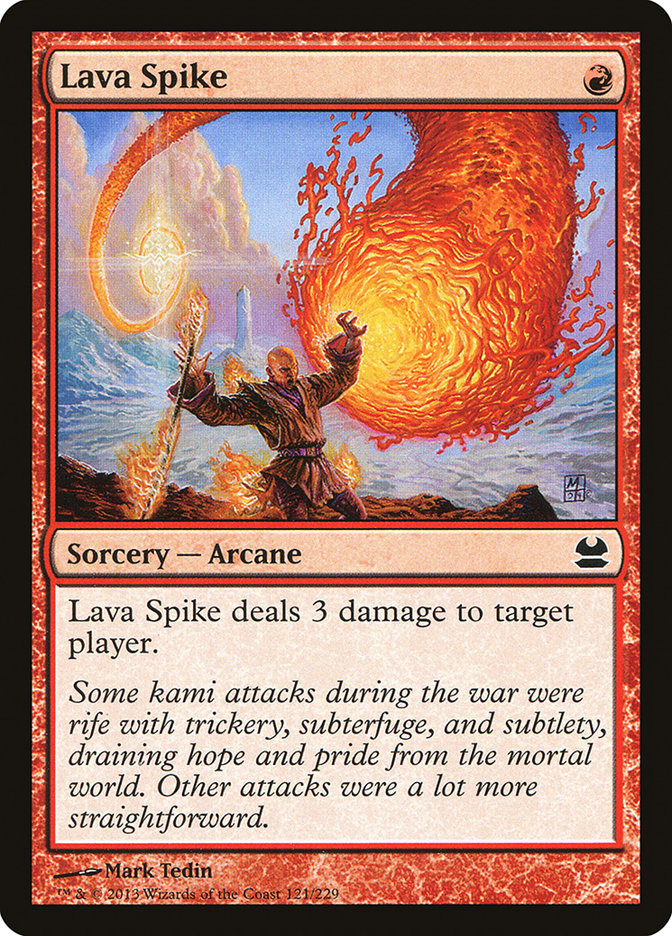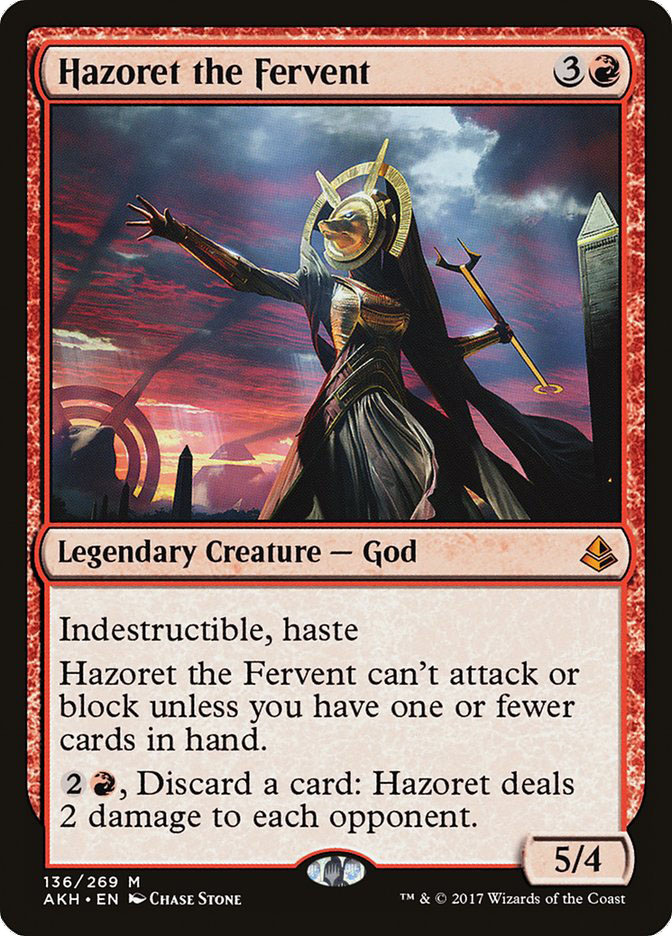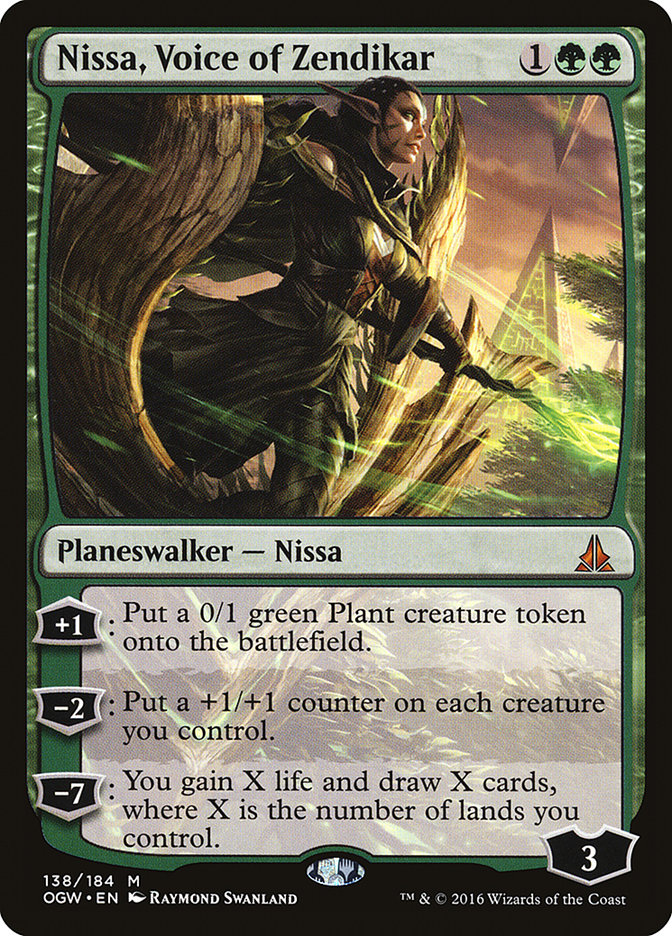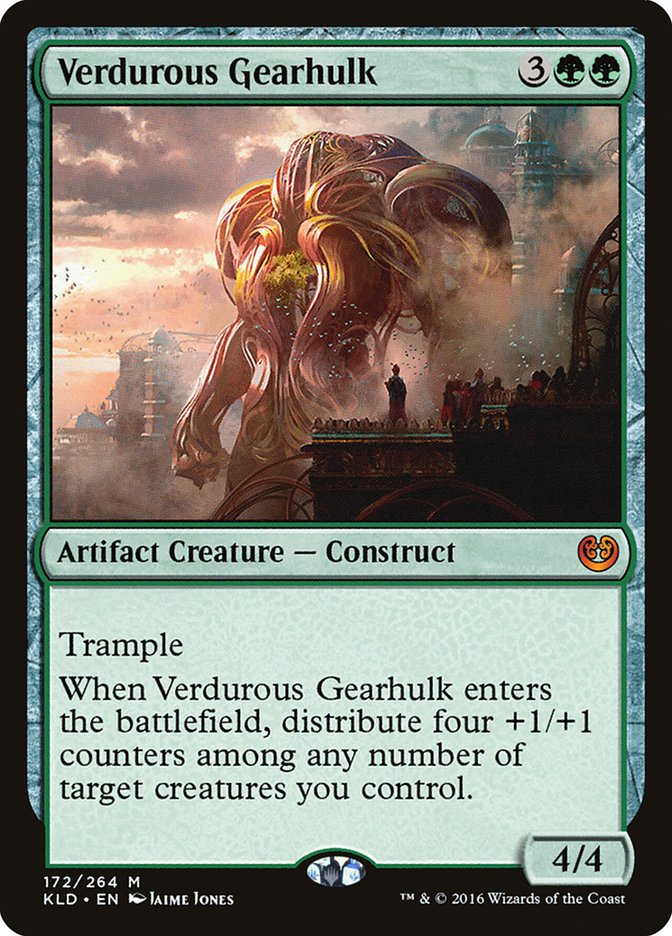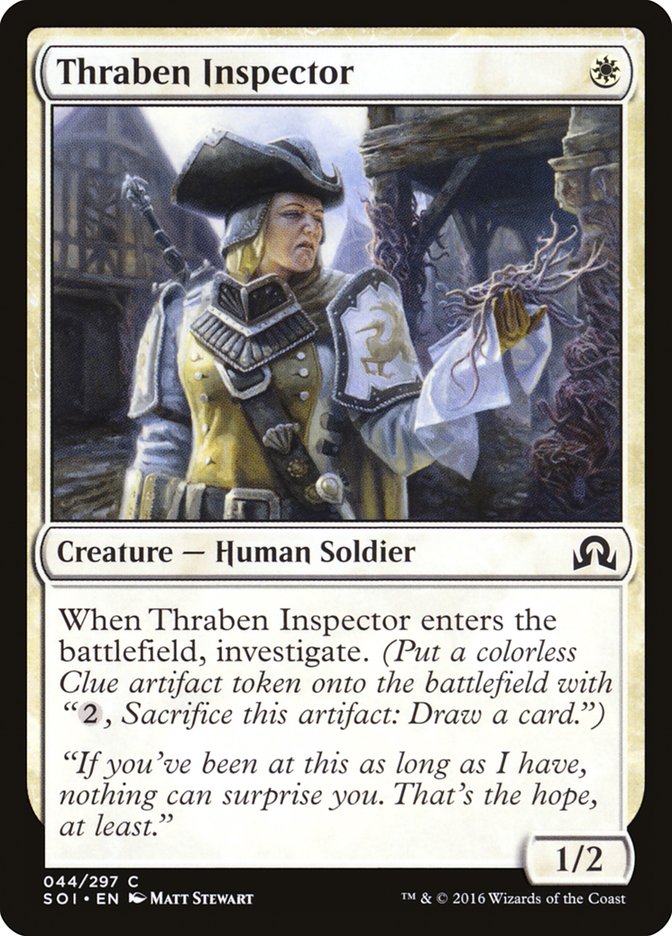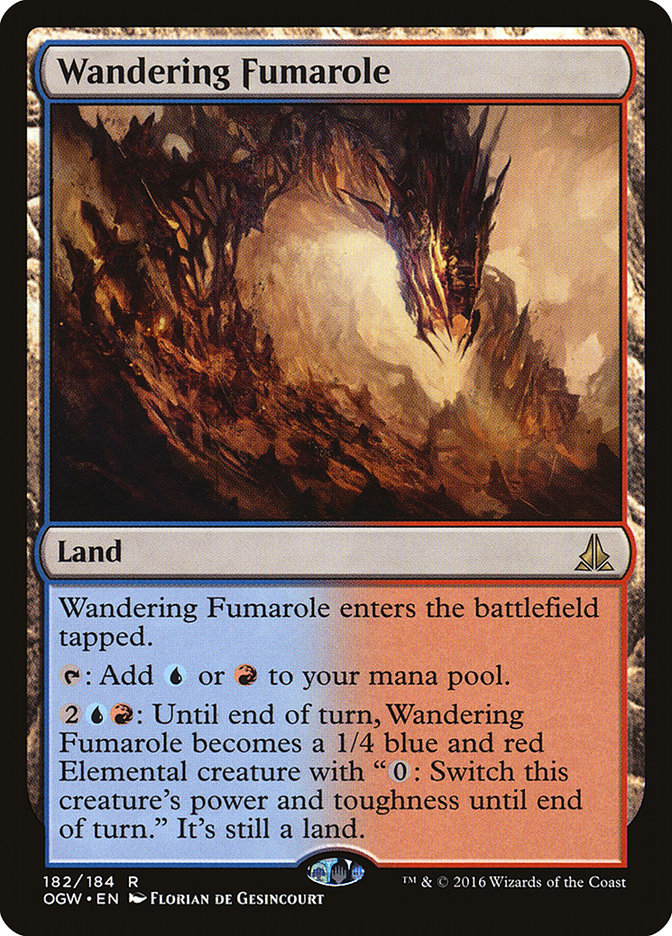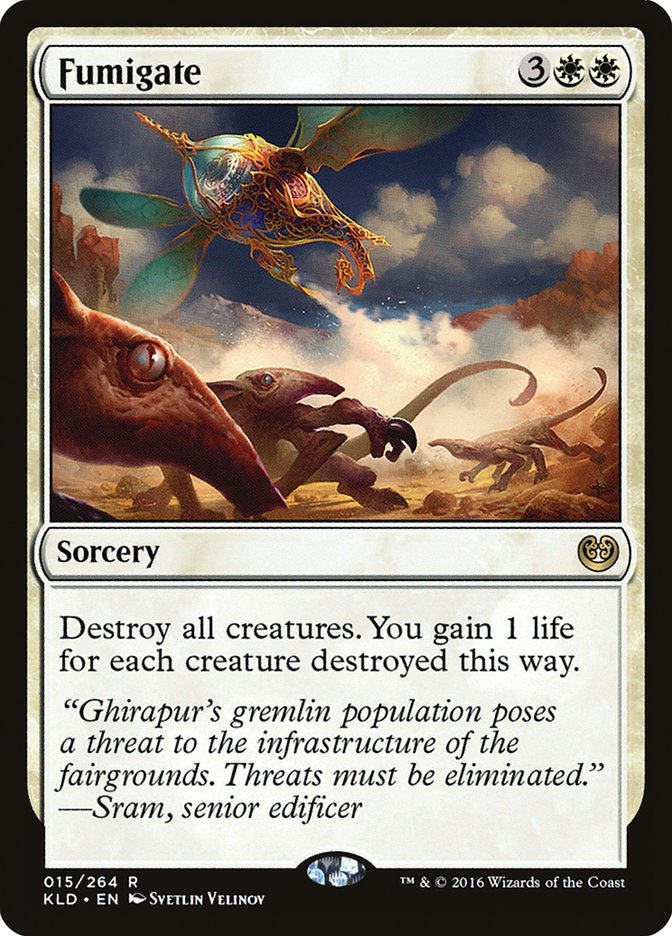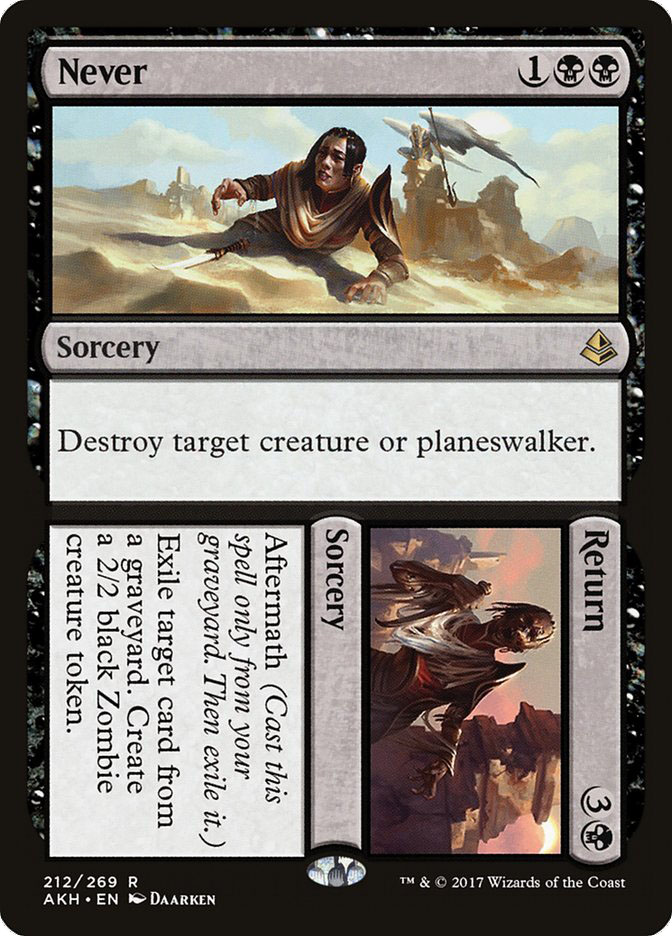Pro Tour Amonkhet is next week, and I couldn’t be more excited.
Actually, that’s not true. If I was planning on competing at the Pro Tour,
I’m sure I would have found a way to ratchet my excitement up a few more
notches. Still, the prospect of having a nearly brand-new Standard format
to watch all weekend long has me practically salivating.
And after the weekend’s over, there will be a completely different Standard
landscape to become familiar with. Well, hopefully. I suppose it’s possible
that Mardu Vehicles will just run roughshod over the competition again, but
as I discussed
last week
, I don’t think that’s going to happen. Come next week, Standard will have
changed. It’s not a question of if, but of how.
But for those of us not going to the Pro Tour, trying to figure out ahead
of time what Standard is going to look like isn’t the best use of our time.
It’s a little like reinventing the wheel. Instead of trying to one-up the
sheer volume of resources pro teams throw at new Standard, I’m spending my
Magic time fine tuning the processes I’ll use to get a handle on the wealth
of information soon to be available to me. First and foremost among them,
my process for figuring out what’s important in and how to play new
matchups.
Know the Roles
Ever since the publication of Mike Flores’s famous article
Who’s The Beatdown
twenty or so years ago [I’m a million-Ed.], role assessment has
been seared into our collective consciousness as the fundamental
principle of Constructed Magic. And truth be told, role assessment
has only gotten harder over the years. Standard Magic of today is less
polarized than the Magic of yesteryear, filled with many more
decks that can aptly be described as midrange.
Sure, sometimes it’s easy. When a hyper aggressive deck like W/R Humans
runs up against any flavor of Torrential Gearhulk, it’s trivial to
determine which deck is supposed to be attacking. But we shouldn’t count on
new matchups being so easy to understand.
That’s more like it. Both Mardu Vehicles and G/B Constrictor are decks that
fall somewhere along the aggro-midrange spectrum. When decks like these
battle, it’s not at all clear cut who is supposed to be the aggressor.
Often the matchup will tend one way or another in the abstract, but the
correct role in any given game will ultimately be decided by the texture of
the opposing draws. Based on the cards in your hand and what you can infer
about your opponent’s holdings, you need to reach an on-the-fly decision
about what role you are supposed to be in for this game. How can we
possibly learn how to do that?
There’s only one way: play games. A lot of games.
Grab a friend. Have her battle you in the matchup you’re trying to figure
out. Play ten games where you play your cards as aggressively as possible.
Then play ten games where you play as defensively as possible. The goal in
these games is not to win; it’s to learn as much as you can about the
context that determines whether or not you should be the beatdown in a
given game.
Theorycrafting which deck should be the aggressor is all well and good, and
I highly recommend doing so to develop an idea of a typical game in the
matchup. But there’s far too much nuance in midrange on midrange battles to
be able to turn theory into an accurate idea of who should be the aggressor
based on the actual cards drawn. No, the only way to become good at that is
to have experience, and the fastest way to gain experience is to
experiment. If you only ever make the plays that you think are right,
you’ll never get the chance to try a good play that you brushed off as bad.
Push aggressive and defensive postures to their limits and see what you
learn.
Know the Roles Redux
But because this is Magic in 2017 and not Magic in 2000, we’re not done
with role assignment after we figure out which deck is the beatdown. No, we
still need to think about the timetable imposed on the deck in the control
role. You see, these days in Magic it’s more or less mandatory that a deck
turn the corner sooner rather than later. Just how soon is a function of
the matchup, and something we should figure out about every matchup that we
expect to play.
The necessity of turning the corner is best illustrated by looking at a
matchup against Burn. Imagine you’re playing your favorite Modern control
deck against Burn. You lose the die roll and quickly fall behind to a few
haste creatures backed up by an Eidolon of the Great Revel. A few turns
later the dust settles and you get to breathe a sigh of relief: You’ve
cleared the board and weathered the storm. Sure, you’re down to five points
of life, but they have no cards in hand. What could go wrong?
Five turns later, a Lava Spike off the top ends the game. You dealt with
the initial onslaught, but without any way to turn the corner and end the
game yourself, your Burn opponent was able to run you out of counterspells
and win the game. After all, they had all the time in the world.
Standard lately has felt a dearth of direct damage burn spells, but that
doesn’t mean decks trying to be the beatdown lack ways to punish opponents
who let the game drag on too long. For most Standard decks, winning the
game will involve taking aggressive lines at some point, and knowing when
that point comes is critically important.
Torrential Gearhulk cannot stay back on blocking duty forever, no matter
how badly it wants to.
So, how do we figure out when we need to start working towards turning the
corner? Honestly, the best time to turn the corner is as soon as you
possibly can. Every turn earlier you end the game is one less draw step
they get, one less chance to develop the critical mass that will tip the
scales in favor of their aggressive plan. In your test games, slowly push
the bar back. Start looking for attacks a turn earlier than you normally
would. Develop to the board rather than hold up removal for Heart of Kiran
on turn 3 instead of your normal turn 4. Again, experimentation is key.
Creatures (23)
- 4 Sylvan Advocate
- 4 Tireless Tracker
- 1 Gonti, Lord of Luxury
- 4 Verdurous Gearhulk
- 4 Winding Constrictor
- 2 Rishkar, Peema Renegade
- 4 Walking Ballista
Planeswalkers (2)
Lands (25)
Spells (10)

I spent most of last format playing various G/B Constrictor lists that
looked very similar to the above list. The matchup against Mardu Vehicles
is a perfect illustration of these concepts. By and large, Mardu Vehicles
was the aggressor in the game 1 matchup. No one element of Mardu was too
much for G/B on its own, but the package deal of one-drops, Heart of Kiran,
Scrapheap Scrounger, and Unlicensed Disintegration meant that failing to
take a defensive posture would result in G/B being quickly run over.
Letting Heart of Kiran connect twice tended to be game over.
But playing the control role for too long meant that Gideon, Ally of
Zendikar would take over the game and G/B would find itself beat from
another angle. The G/B deck had to thread a delicate needle, playing
cautiously and defensively for the first few turns while setting up into
powerfully turning the corner and becoming the aggressor. I found that the
critical turn tended to come along turn 5 or turn 6, helped along by these
two.
Many players have stated that they didn’t like Nissa, Voice of Zendikar in
the Mardu matchup. And it’s true, when deployed on turn 3 Nissa often met
an untimely end and looked very ineffective. But on turn 5 or 6 her minus
grew the G/B team past the Mardu battlefield and made that necessary
aggression possible. The whole key to the G/B and Mardu matchup was
understanding that G/B had to switch from control to beatdown right around
turn 5. Role assessment at its most nuanced.
Identify Key Cards and Earmark Frequent Tactical
Opportunities
Alright, now that we have a handle on what the roles are supposed to look
like in this new matchup, what’s next? Now the time has come to give some
thought to what the key cards in the matchup are. Some of them will be
obvious. Gideon, Ally of Zendikar is a key card out of Mardu Vehicles in
nearly every matchup. Some of them will be less obvious, like the
importance of Nissa, Voice of Zendikar to G/B in its Mardu Vehicles
matchup. Still, after playing all those games to figure out how the roles
should be divided up, you likely have a solid intuitive feeling for what
the key cards are.
Having a predetermined list of which cards are the best for you in a
matchup can help to guide your play. Once you figure out that resolving a
Gideon, Ally of Zendikar is the best thing you can possibly do against a
Torrential Gearhulk deck, you can focus on steering those games to that
point. Further, knowing which cards are the most important out of your
opponent’s deck can help you avoid disaster. On turn 4 with a Torrential
Gearhulk deck, take a couple extra points of damage and cast your removal
spell on their end step to make sure you have mana up to Disallow a
potential Gideon.
But this is stuff that you would develop a feel for just from playing
games. No, the real advantage to systematically thinking about key cards is
the ability to then go a step further and come up with a list of secondary
key cards. These are cards that support the key cards, that allow them to
shine and thoroughly dominate games. The best example I have is Thraben
Inspector out of Mardu Vehicles in any creature mirror.
In creature mirrors, whenever Mardu Vehicles fails to just overwhelm the
opponent with its early game, most of its win percentage lies in the trusty
hands of Gideon, Ally of Zendikar. Having an active Gideon for three turns
is hard for most decks to beat. The flip side to that, however, is that a
Gideon that only gets to activate once is not nearly as imposing. Defending
Gideon is paramount, and the MVP of Gideon defense is Thraben Inspector. A
single Knight token can be dealt with on the path to attacking down Gideon,
but a Knight token plus a Thraben Inspector on defense is a much tougher
nut to crack.
Identifying secondary key cards allows you to understand more fully how
high-impact your key cards are going to be with a given draw and gives you
the best possible information with which to steer the game. When Mardu
Vehicles draws multiple Thraben Inspectors in a creature mirror, it can
afford to sit back a little more than it otherwise would and comfortably
ride a Gideon to victory. Patterns like this can be hugely helpful and you
should always be seeking to figure out which of your cards are allowing
your all-stars to shine the brightest.
The last thing to think about with key cards is key spots: battlefield
positions that keep coming up that are opportunities for you to gain a
critical edge over your opponent or prevent your opponent from gaining an
edge over you. Typically, these will involve cards previously identified as
key.
You resolve a Gideon, Ally of Zendikar onto an open battlefield against
your U/R Torrential Gearhulk opponent. It resolving was unexpected, but you
won’t look a gift horse in the mouth. You slam your Knight token onto the
board and confidently pass. Next thing you know, they’ve Harness
Lightninged your Knight and removed your Gideon with a simple Wandering
Fumarole activation. Spoiler: you should have plus’ed your Gideon.
You were lucky enough to win the die roll in your G/B mirror. You led with
a Hissing Quagmire, and your opponent passed their turn after playing a
Blooming Marsh. On turn 2 you go ahead and deploy your Winding Constrictor,
which they go ahead and Fatal Push. Then they play a Grim Flayer and your
turn 3 looks troubled. You can Grasp of Darkness their Grim Flayer, or let
it hit you and deploy a Nissa, Voice of Zendikar, but you can’t do both. If
you had just left Grasp up instead of casting that Winding Constrictor last
turn, you wouldn’t be in this position right now.
The first was an example of adequately protecting your key card, the second
was of seeing unorthodox ways of playing around their key cards. Not
playing a two-drop on two is a play a lot of players wouldn’t consider, but
one that wins a lot of games in the face of Fatal Push. Be on the lookout
for spots where key cards play pivotal roles and earmark them for future
study. These spots play an outsized role in the outcome of games and are
supremely worthy of your time.
Complicated spots merit some serious thought outside of tournament play.
When they come up in testing, I highly recommend taking the time to think
through every permutation of cards that both you and your opponent could
have. Making the right decision in spots like these will win you countless
games, and finding the right decision on the fly is a nearly impossible
task.
Rinse, Wash, and Repeat with Common Sideboard Cards
So we know our roles, know when they need to shift, have a good idea of
what the most important cards are, and have spent some time studying the
nuances of key situations. What more could there possibly be?
Well, turns out we have to do it all again with the presence of popular
sideboard cards accounted for. Fortunately, we aren’t starting from
scratch. Realistically, decks cannot afford to sideboard enough in any
single matchup to fundamentally alter the nature of that matchup. So
instead of relearning the matchup from the ground up, we merely have to
recalibrate our thinking for the presence of sideboard cards. I find it
useful to categorize sideboard cards into two broad categories: punishers
and enablers.
Punishers are sideboard cards that punish the opposing deck for playing the
game they want to play. We can generally think about how a deck wants to
play and the role it’s supposed to take as interchangeable concepts. Let’s
look at Fumigate as an example of a punisher sideboard card. Fumigate
devastates opponents who commit too heavily to the beatdown, its very
presence in the post-sideboard games forcing them to slow down. This was an
important dynamic in the G/B Constrictor and Mardu Vehicles matchup, and if
you replace Fumigate with any Wrath of God effect, it’s one that has been
important throughout the history of Magic.
Playing against sideboard punishers is an exercise in moderation. Rarely
can you afford to just not take the role you need to take, but at the same
time you aren’t looking to flat lose every time they fail to stumble and
succeed in drawing their sideboard card. The solution for the most part is
to play a little more midrange-like and dance the line of committing as
heavily as possible without overcommitting. This is a line that can only be
found by playing games. For every tournament match in which a Fumigate was
played around beautifully, there were ten games in testing lost to
overextending or not extending enough into a Fumigate deck.
Enablers are the opposite of punisher sideboard cards. These are cards that
help decks play the role they want to play. Sometimes, this enabled role
won’t even be the one that they were supposed to take game 1. For example,
Mardu Vehicles is now infamous for sideboarding away from its aggro roots
and into a much more solidly midrange deck reliant on Planeswalkers for the
heavy midrange lifting. Plans like this are often designed to cement the
deck’s ability to play roles that it was forced to play in game 1 but
wasn’t particularly great at.
Sometimes enablers work in weird ways. Simply by virtue of being a
non-combat solution to Gideon, Ally of Zendikar and other Planeswalkers,
Never and its predecessor Ruinous Path did a lot of work in allowing G/B to
play the control role in the Mardu Vehicles matchup, rather than be forced
to get aggressive to take down Planeswalkers. Be aware of enablers, and
don’t depend on the opposition being as ill-suited for the role you force
them to take in game 2 as they were in game 1.
The last big thing to think about when it comes to post-board games is the
new lack of dead cards. In game 1, decks will often run a few cards that
are very subpar in specific matchups. Just something you have to do when
playing against an open field. But in games 2 and 3, there’s no reason for
those dead cards to still be in the deck. This tightens up games and makes
them closer and less likely to be decided by volume of blanks drawn. This
tends to favor the beatdown role in a given matchup, and is something you
should be aware of.
Have fun learning all the new matchups to come out of Pro TourAmonkhet in preparation for #SCGKY. I know I
can’t wait.




